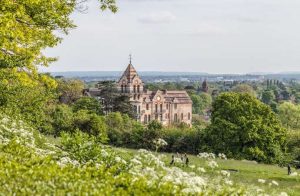Natural Beauty and Wildlife
Windsor Castle is not only a treasure trove of history but also a haven of natural beauty, surrounded by extensive parklands that offer a serene escape into nature. The castle is set within the expansive Windsor Great Park, a former royal hunting ground that spans over 5,000 acres of diverse landscapes. The park is a collection of woodlands, ancient oak forests, sweeping grasslands and meticulously maintained gardens, each contributing to the rich biodiversity of the area.
The woodlands, with their towering oaks, beeches, and chestnuts, provide a tranquil canopy home to an array of wildlife. The surrounding grassy meadows, dotted with wildflowers in the warmer months, offer a picturesque setting for strolls and picnics. Meanwhile, the formal gardens, such as the Savill Garden and the Valley Gardens, showcase a stunning array of horticultural displays, featuring everything from vibrant rhododendrons to rare and exotic plant species, creating a colourful contrast to the more rustic natural surroundings.
Flora and Fauna. Additionally, Windsor Great Park is renowned for its rich flora and fauna, offering a chance to encounter a variety of wildlife in their natural habitats. The park is particularly famous for its resident deer population, which has roamed these grounds since the medieval period. The herds of red deer and fallow deer are a majestic sight, often seen grazing in the open fields or seeking shade under the ancient trees. These deer have become symbolic of the park's wild beauty and are a highlight for many visitors.
In addition to the deer, the park is home to a wide range of other wildlife. Foxes, badgers, and rabbits can be spotted in the woodlands, while the lakes and streams attract waterfowl such as swans, ducks, and herons. Birdwatchers will delight in the diversity of avian species, from the striking green woodpeckers to the graceful kestrels that soar above the park. The flora is equally impressive, with the park's woodlands boasting some of the oldest trees in England, including the famous "Queen's Oak," which is believed to be over 1,000 years old.

